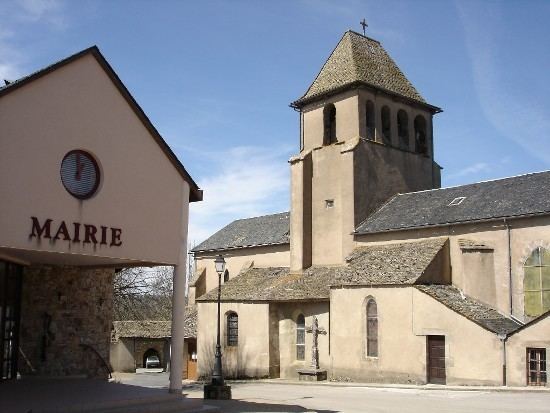Intercommunality Lévézou Pareloup Area 35.43 km² | Region Occitanie Canton Salles-Curan Population (2009) 404 Local time Monday 12:42 AM | |
 | ||
Weather 1°C, Wind E at 5 km/h, 95% Humidity | ||
Alrance 2016
Alrance is a French commune in the Aveyron department in the Occitanie region of southern France.
Contents
- Alrance 2016
- Map of 12430 Alrance France
- Kayak alrance 2016
- Geography
- Administration
- Demography
- Sites and Monuments
- Notable People linked to the commune
- References
Map of 12430 Alrance, France
The inhabitants of the commune are known as Alrançais or Alrançaises
Kayak alrance 2016
Geography
Alrance is located some 30 km west of Millau and about 50 km north-east of Albi. The commune can be accessed by the D56 road which runs north-east from Durenque and intersects the road D25 in the commune. It continues north through the commune to Arvieu. The D25 comes south-east from Salmiech through most of the length of the commune and continues south-east to Villefranche-de-Panat. Access to the village is from the north-east on road D659 which runs off the D577 south of the Lac de Pareloup. The D659 runs south-west and ends at the village. The D528 also runs off the D25 in the south of the commune to the village.
The commune is mostly farmland with some forest and covered by many country roads. There are a number of other hamlets and villages in the commune. These are:
A number of streams rise in the commune and flow to the Lac de Villefranche-de-Panat at the southern border of the commune. The streams include L'Alrance, Ruisseau du Lagasi, and several others. Some streams rise in the north of the commune and flow northwards eventually joining Le Ceor river which eventually flows to the Viaur at Castelpers.
Administration
List of Successive Mayors of Alrance
(Not all data is known)
Demography
In 2009 the commune had 404 inhabitants. The evolution of the number of inhabitants is known through the population censuses conducted in the town since 1793. From the 21st century, a census of municipalities with fewer than 10,000 inhabitants is held every five years, unlike larger towns that have a sample survey every year.
Sources : Ldh/EHESS/Cassini until 1962, INSEE database from 1968 (population without double counting and municipal population from 2006)
